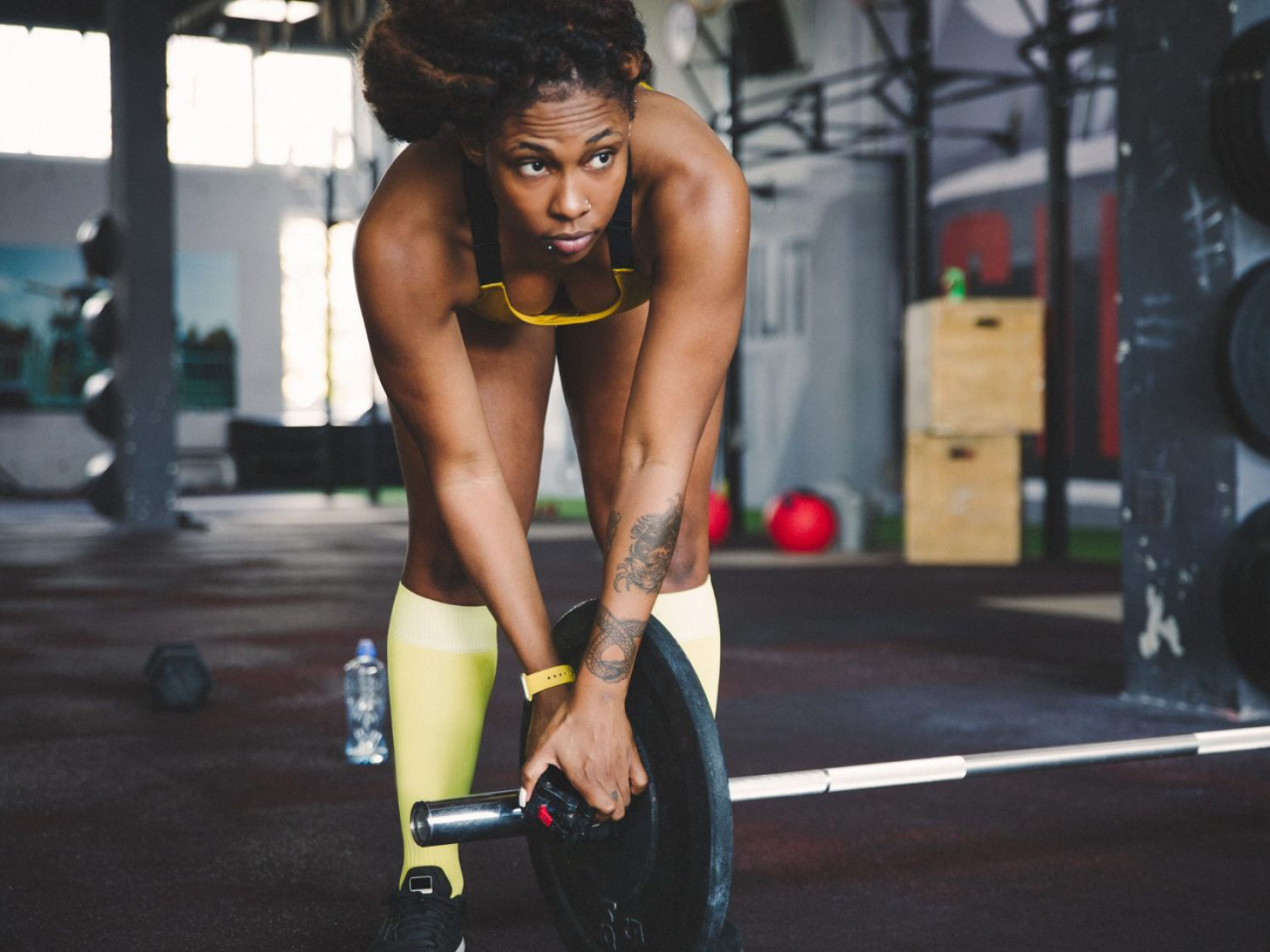Strength training can reduce lower back pain, but only when done with correct form. Here’s how to look after your lower back when lifting weights.
The benefits of strength training go above and beyond building muscle. The workouts can support mental health, grow confidence, improve cardiovascular fitness, protect you from injury and alleviate pain.
On that last note, a 2015 study from the Univeristy of Dublin showed that resistance training can reduce chronic pain by 72%. Given that more of us are suffering with back aches and pain thanks to working from home (recent research by Versus Arthritis found 81% of remote workers are experiencing back, neck and shoulder pain), it’s more important than ever to keep our bodies strong and stable.
You may also like
5 experts explain the benefits of strength training for women
“It’s so important to look after our backs because our spinal cord connects nerves, joints and organs,” says osteopath Anisha Joshi.“Strength training, and any exercise really, is amazingly important for our bodies and spinal health – but getting your form right is essential, whether that’s a home HIIT workout or lifting heavy weights.”
“If you’re lifting weights or doing regular exercise without the right muscle control and strength or the understanding of how your body is supposed to move then you’re putting a bigger demand on your body,” says physiotherapist and weight lifter Samantha Williams. “That’s why it’s important that you prime and protect the structures to be able to handle the tasks that you’re asking of it.”

Taking steps to look after your back during your workout will give you a better workout, reduce the risk of injury and alleviate pain in the long run. How exactly do you do that? Samantha and Anisha explain.
Warm up
You know that jumping into a workout without prepping your body is a disaster waiting to happen, but that’s never more true than when talking about weight lifting and your back. That’s because a dynamic warm-up increases joint lubrication and blood flow to the muscles so they move more easily.
“Getting the body ready should include mobility and activation exercises,” says Samantha. “To properly prime the body, you need to do the same exercises you’ll be doing in your workout with bodyweight or light weights to ensure your form is right and there are no aches or imbalances before lifting heavy.”
You may also like
Glute workout: build stronger glutes with muscle activation
Respect the weight
Just because you may not be lifting your heaviest weight, it doesn’t mean you shouldn’t be doing it properly. Using lower weights actually gives you a chance to focus more on your body and what it’s telling you so that you know if you’re ready to lift heavier. “It doesn’t really matter if it’s 10 kilos, 50 kilos or 100 kilos, you have to respect that that it is weight and it is still heavy,” says Samantha.
“People often compare themselves to others on social media and might try and lift heavier than they can,” adds Anisha. “But if you are focused on the numbers, rather than form, it can lead to injury.”
Have a gym buddy
Annoyingly, we can’t see what our backs are doing. And while having an understanding of how exercises are meant to feel, it can help to have somebody else’s eyes on your movement. “Having a training partner who can check alignment and form and is confident enough to say when something looks like it was hard work or that they think you can push yourself further is really useful,” says Samantha.
Utilise your core
“The problem is a lack of understanding about what the core is – it’s not about your ab muscles, but your ability to engage ‘central stiffness’. This stabilises your back and allows you to move appropriately,” Samantha says.
This ‘stiffness’ often comes from the big inhale and bracing of your core before a move such as squatting or deadlifting. But it’s also about making sure that all the muscles in the core are strong; building a strong, supported back isn’t just about targeting the back muscles themselves.
“Try unilateral work such as single-leg glute bridges to build glute strength, as these muscles are commonly weak but are really needed to help support your back when you’re lifting weights. The deep abdominals are also important, so gradually increase your core strength to reinforce your positioning when lifting. I like telling people to hold the plank for just one minute every evening,” says Anisha.
Have a full-body approach
If you find you are getting back pain when lifting, don’t just assume that something is wrong with your back. As Anisha mentioned, there are so many other muscles, joints and organs that can impact our backs, so you can’t think of your spine or surrounding muscles as a singular problem.
“Tight hamstrings, pelvic positioning and muscular imbalances can all be part of the problem,” says Samantha. “Back pain when lifting can sometimes be the straw that broke the camels back, so to speak, and just be a reflection of other things going on rather than the exercises themselves.”
Remember, if you have any pain when lifting it’s always best to speak with a health professional.
Follow @StrongWomenUK on Instagram for the latest workouts, delicious recipes and motivation from your favourite fitness experts.
Follow Samantha @physio_rio and Anisha @osteoanisha on Instagram.
Images: Getty
Source: Read Full Article
